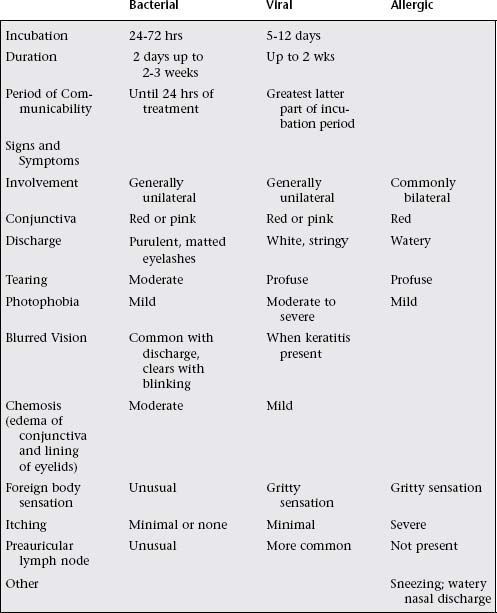CHAPTER 3 Acute Conditions
The number of school-age children who come to school with an acute illness is difficult to estimate. Frequently, nurses in the school and community setting are the first called on to determine whether a health problem exists and if further assessment is required. Thus the nurse must be aware of signs and symptoms of individual illness, must be able to provide the necessary initial management, and must make appropriate and informative referrals for additional treatment when necessary. Initial management information in this chapter gives the nurse a plan of action. After assessing the problems, the nurse frequently must provide health care and comfort until a parent assumes responsibility or there is additional medical intervention.
BLEPHARITIS
III. Signs, Symptoms, and History
CONJUNCTIVITIS
III. Signs, Symptoms, and History
DIAPER DERMATITIS
III. Signs, Symptoms, and History
DIARRHEA
III. Signs, Symptoms, and History
WEB SITES
National Institute of Diabetes and Digestive and Kidney Diseases http://www.niddk.nih.gov
Food Allergy and Anaphylaxis Network http://www.foodallergy.org
ECZEMA (ATOPIC DERMATITIS)
III. Signs, Symptoms, and History
ERYTHEMA INFECTIOSUM, HUMAN PARVOVIRUS INFECTION (FIFTH DISEASE)
III. Signs, Symptoms, and History
WEB SITE
National Center for Infectious Diseases http://www.cdc.gov/ncidod/diseases/children/diseases.htm
FEVER
III. Signs, Symptoms, and History
FROSTBITE
III. Signs, Symptoms, and History
GIARDIASIS
III. Signs, Symptoms, and History
Box 3-2 Disinfectant Solution
One-quarter cup bleach (5.25% sodium hypochlorite) per gallon of cool water
One tablespoon bleach per quart of cool water
HAND, FOOT, AND MOUTH DISEASE
III. Signs, Symptoms, and History
HEPATITIS A
III. Signs, Symptoms, and History
Stay updated, free articles. Join our Telegram channel

Full access? Get Clinical Tree



